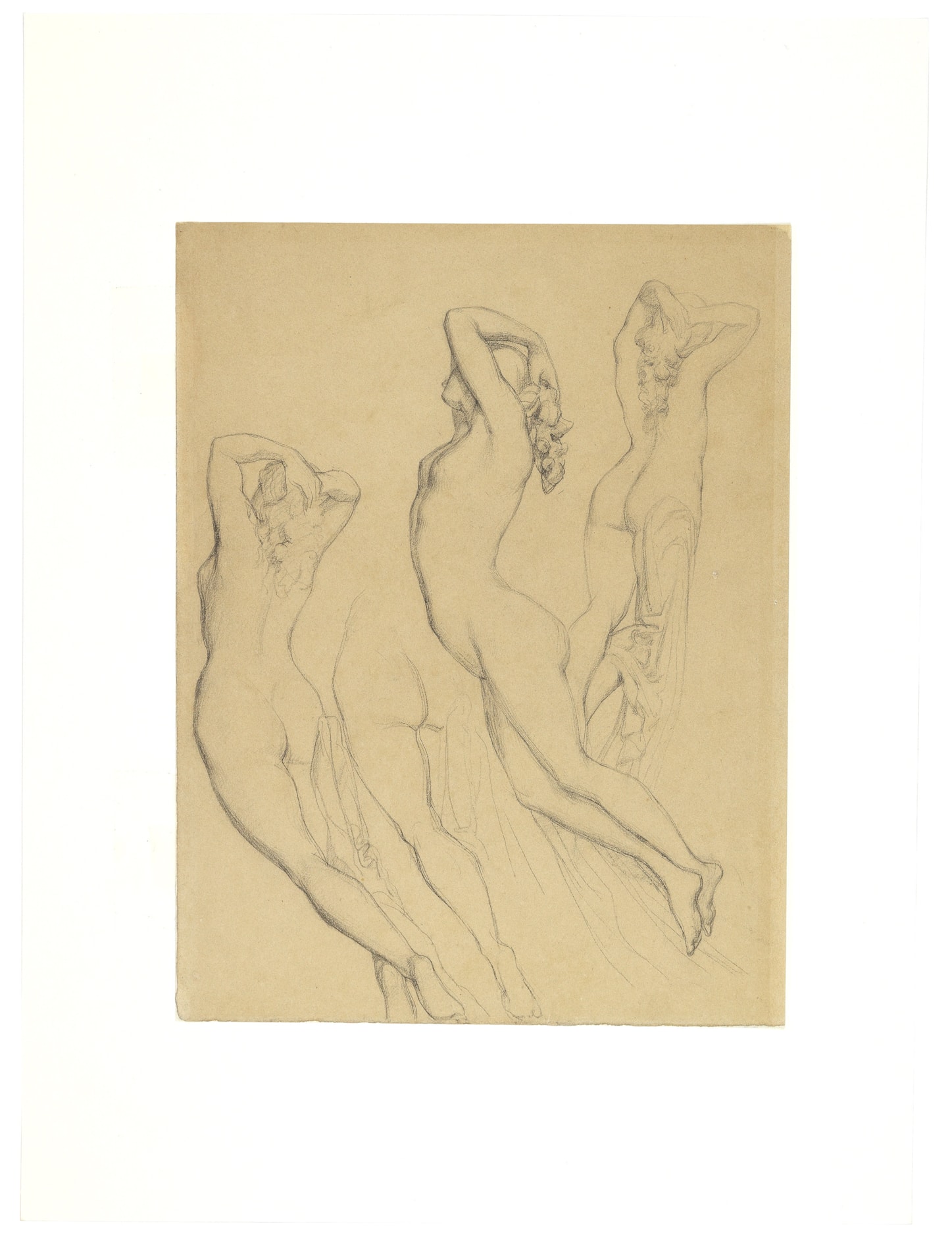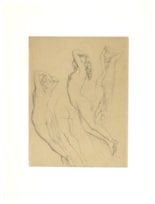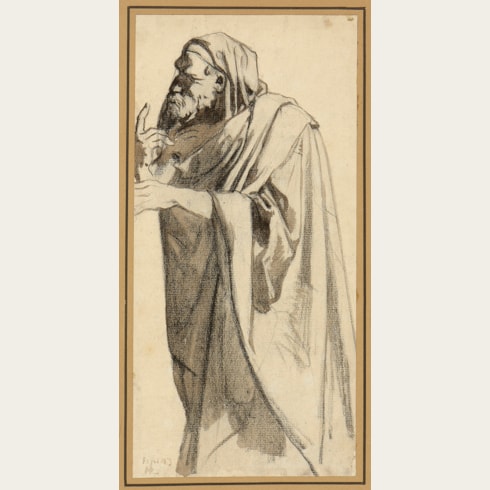Henri LEHMANN
(Kiel 1814 - Paris 1882)
Four Studies of a Female Nude
Sold
Pencil on buff paper, backed.
253 x 193 mm. (10 x 7 5/8 in.)
253 x 193 mm. (10 x 7 5/8 in.)
This is an early preparatory study for one of the central figures in Henri Lehmann’s large painting of The Despair of the Oceanids at the Base of the Rock upon which Prometheus is Enchained, commissioned from the artist in 1849 by the State, for the sum of 6,000 francs, and intended for the Musée du Luxembourg. The painting was completed in 1850 and exhibited at the Salon of that year. Today in the collection of the Musée départmental des Hautes-Alpes in Gap, this monumental painting – over two and a half metres in height - served to firmly establish Lehmann’s reputation.
This drawing gives some idea of the care with which Lehmann prepared his compositions, and shows the artist working out the pose of the central oceanid in the final painting. He would produce many individual studies for each of the figures in his paintings, often studying the pose first with a nude model – a legacy of his training with Ingres - before adding clothing to the figure. Two more finished studies for the same floating nymph, drawn in black, red and white chalk, are in the Musée des Beaux-Arts in Orléans.
Lehmann had treated the same theme in an earlier painting of 1844, which was exhibited at the Salon in 1846 but is now lost.
This drawing gives some idea of the care with which Lehmann prepared his compositions, and shows the artist working out the pose of the central oceanid in the final painting. He would produce many individual studies for each of the figures in his paintings, often studying the pose first with a nude model – a legacy of his training with Ingres - before adding clothing to the figure. Two more finished studies for the same floating nymph, drawn in black, red and white chalk, are in the Musée des Beaux-Arts in Orléans.
Lehmann had treated the same theme in an earlier painting of 1844, which was exhibited at the Salon in 1846 but is now lost.
Born in the German Duchy of Holstein, Henri Lehmann first studied with his father Leo, a portrait painter and miniaturist. In 1831 he settled in Paris, where the following year he entered the studio of Jean-Auguste Dominique Ingres. He soon became one the master’s favourite pupils and assistants, alongside the brothers Paul and Hippolyte Flandrin. At his Salon debut in 1835 Lehmann won a second-class medal with a painting of Tobias and the Angel, the first of several honours and prizes he was to earn throughout his career. Although he was not permitted to compete for the Prix de Rome, by virtue of his German citizenship, he nevertheless travelled at his own expense to Rome in 1838, rejoining his master Ingres, who had been appointed director of the Académie de France three years earlier. Lehmann lived in Rome until 1842, often assisting Ingres in his studio.
On his return to France Lehmann earned a commission for mural paintings for the Parisian church of Saint-Merri, completed in 1844. Other commissions soon followed, and he began to establish a reputation as a painter of historical and religious subjects, portraits and genre scenes. He became a naturalized French citizen in 1847. During the Second Empire Lehmann painted a number of significant public decorative schemes, notably a series of more than fifty allegorical paintings for the Galerie des Fêtes of the Hôtel de Ville in Paris, completed in 1852 but destroyed by fire during the Commune of 1871, as well as works for the Palais de Luxembourg in the 1850s and the Palais de Justice in the 1860s. Like many of Ingres’ pupils, Lehmann was also in great demand as a fashionable portrait painter. Appointed a professor at the École des Beaux-Arts in 1875, he devoted much of the last years of his career to teaching; among his students was the young Georges Seurat. A large group of drawings by Lehmann is today in the Musée Bonnat in Bayonne.






